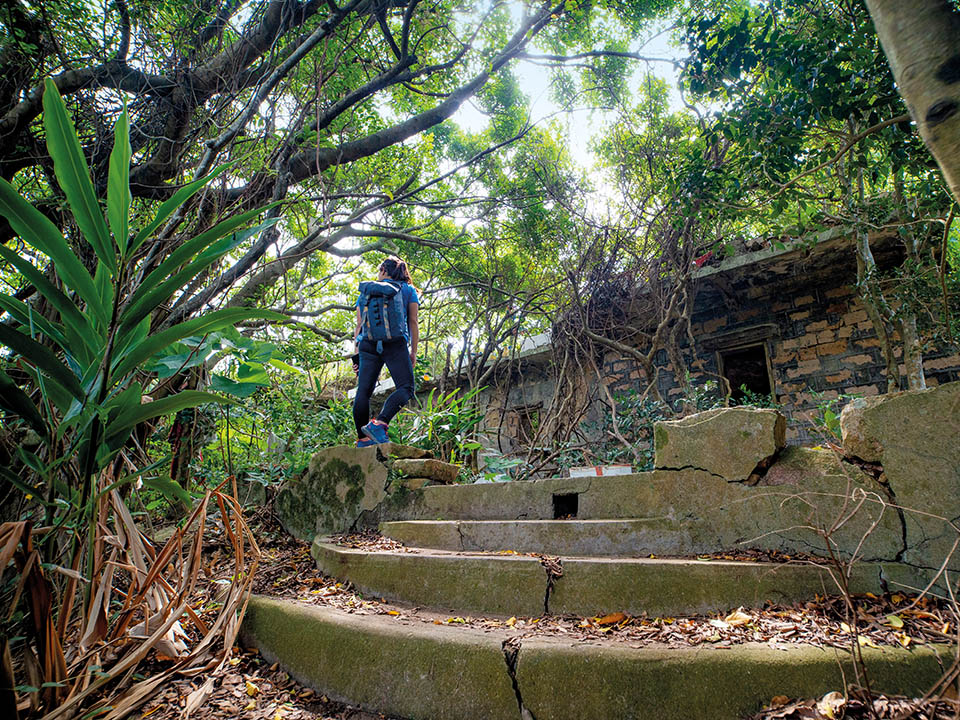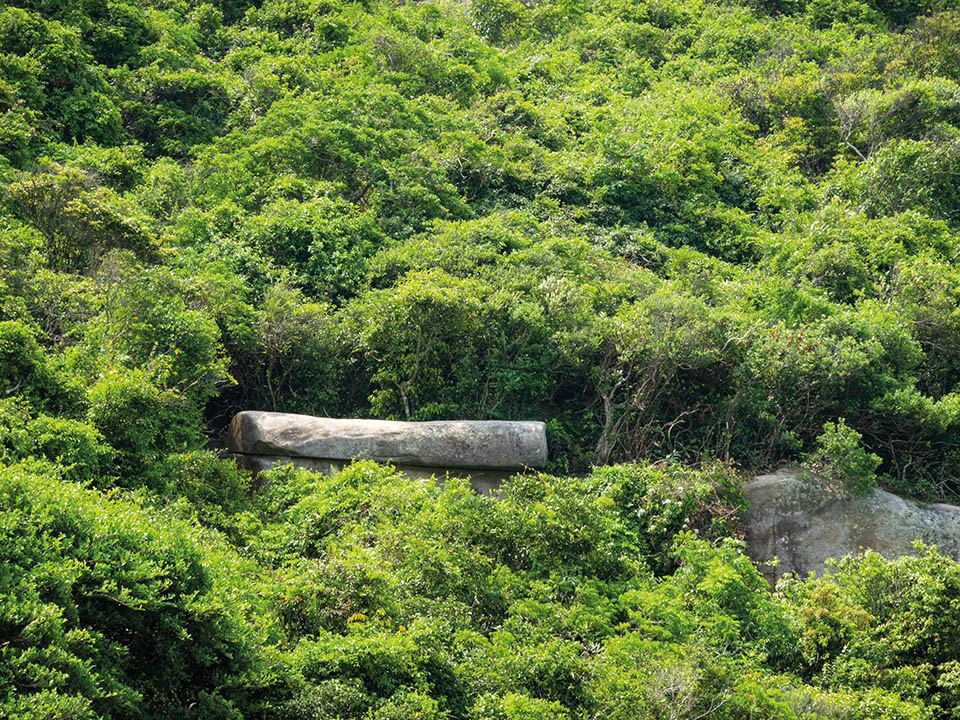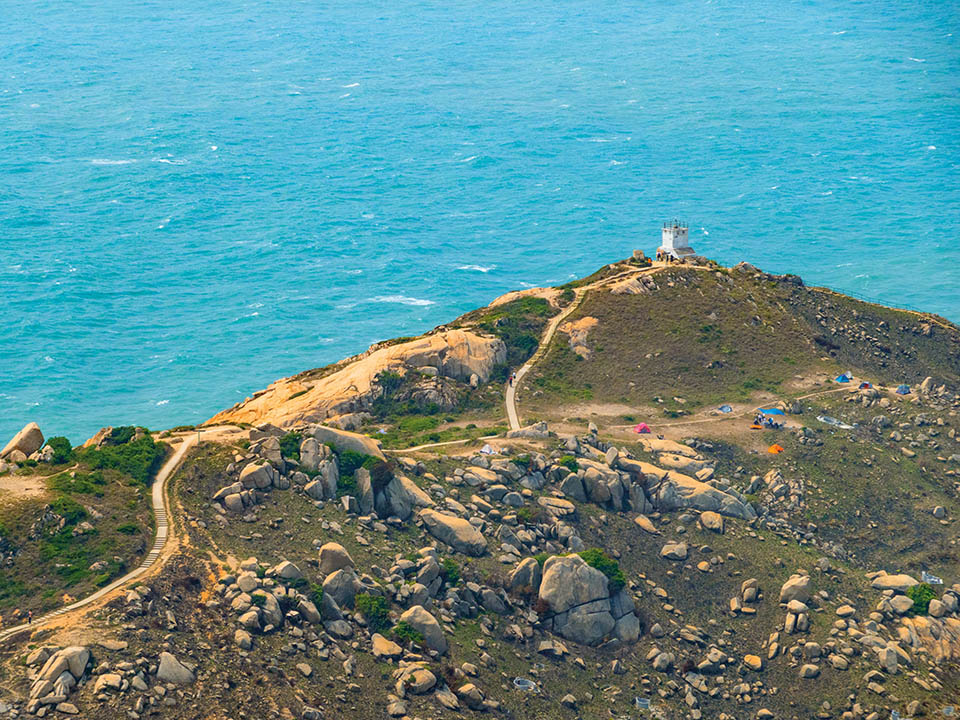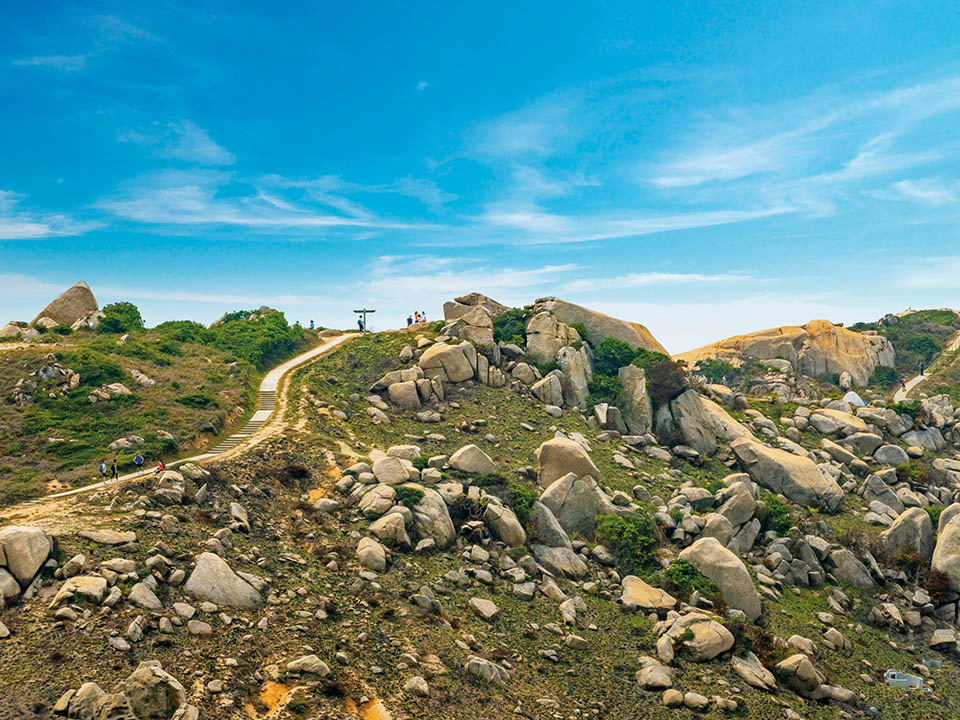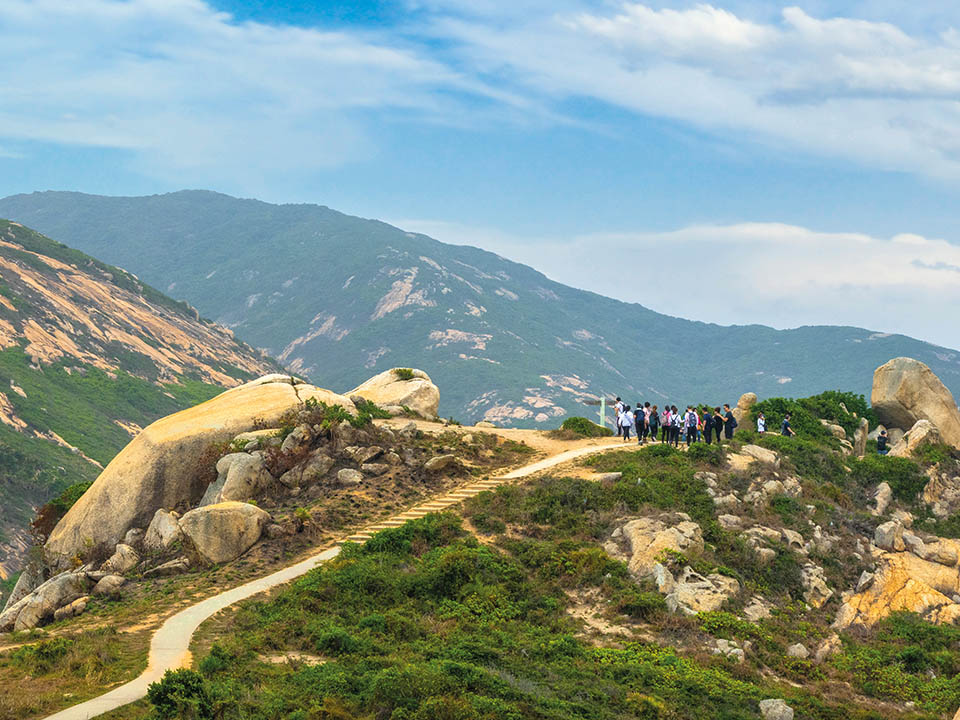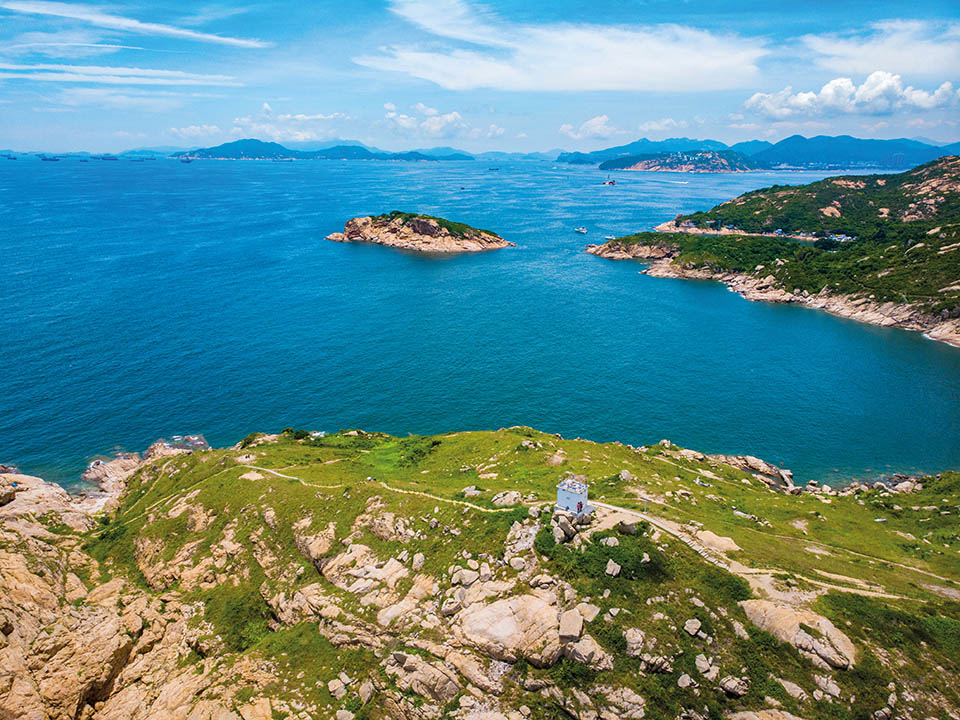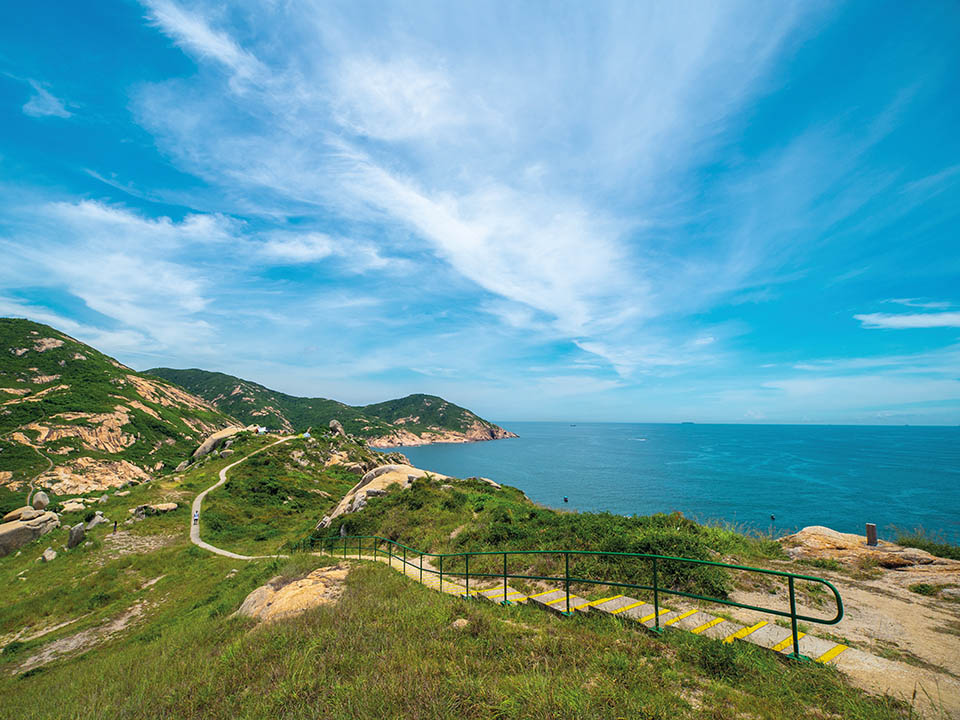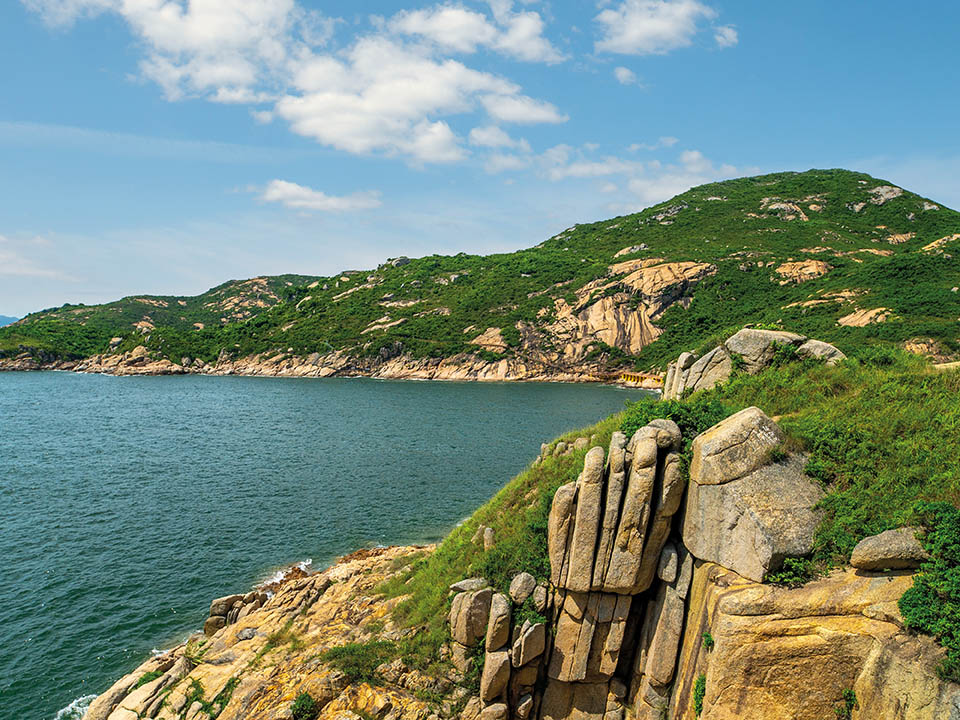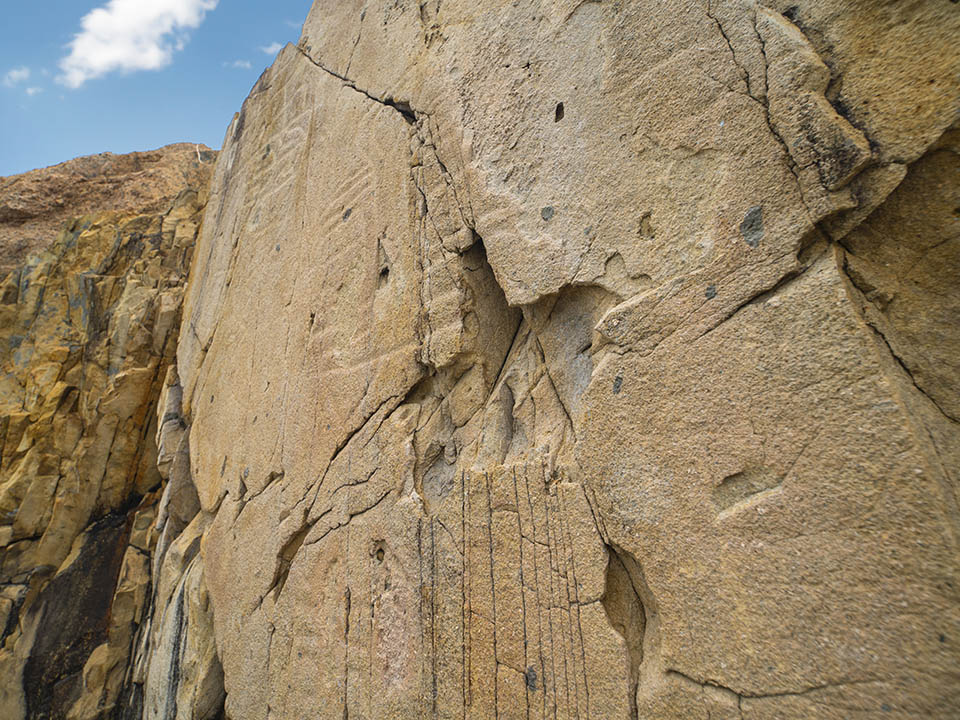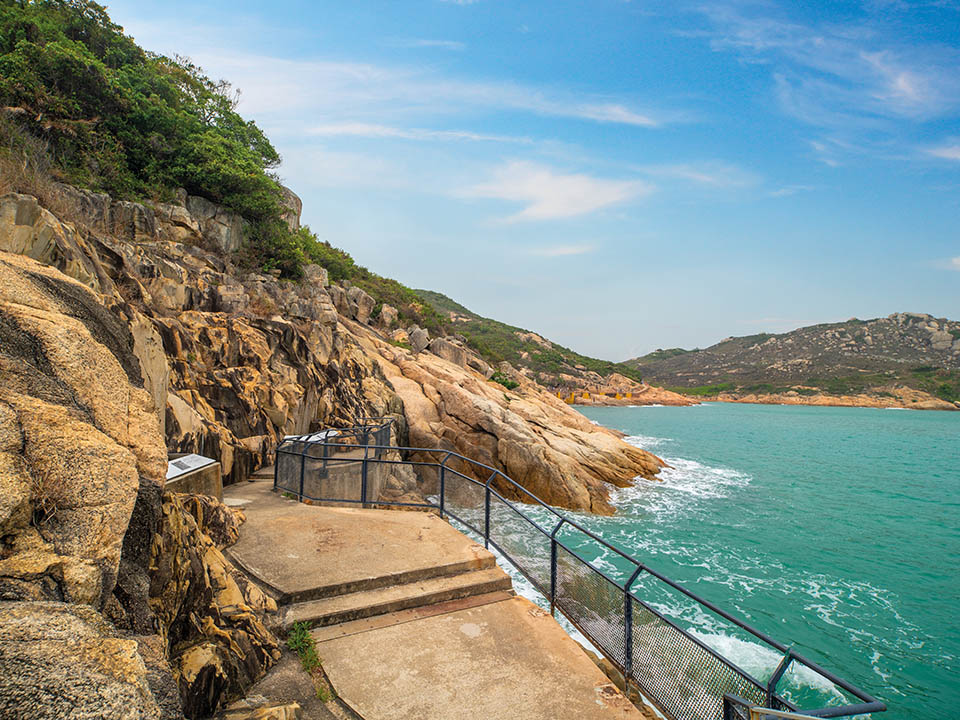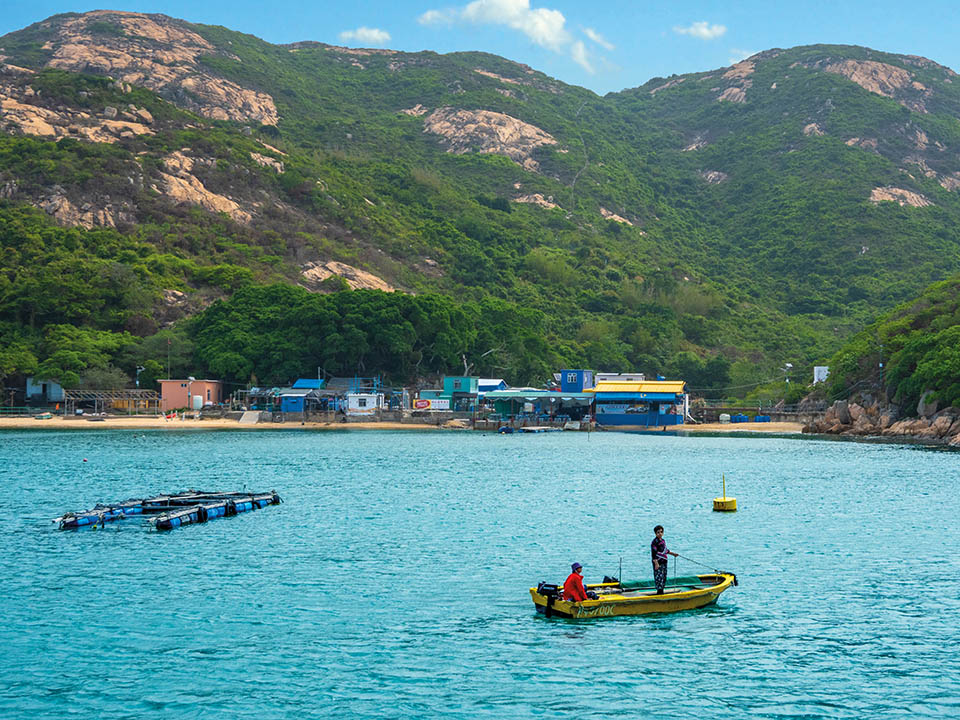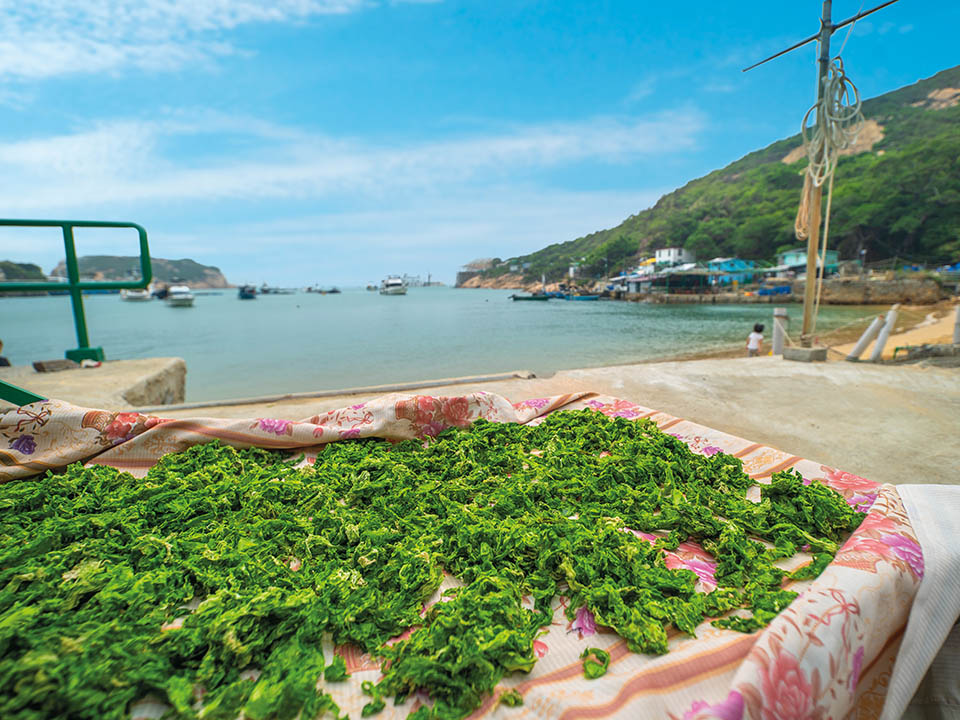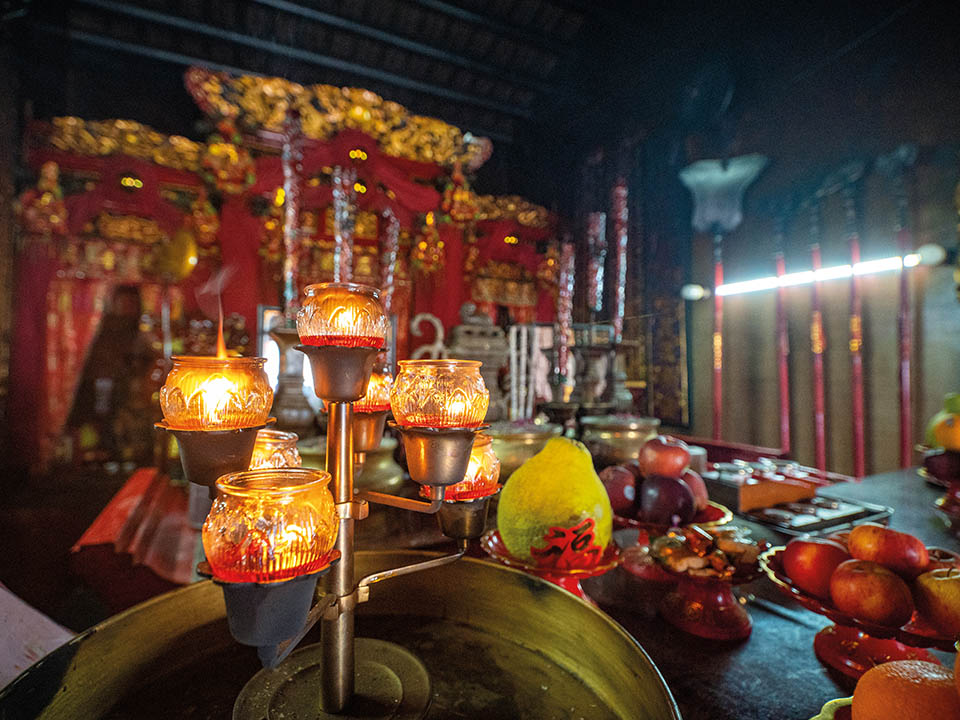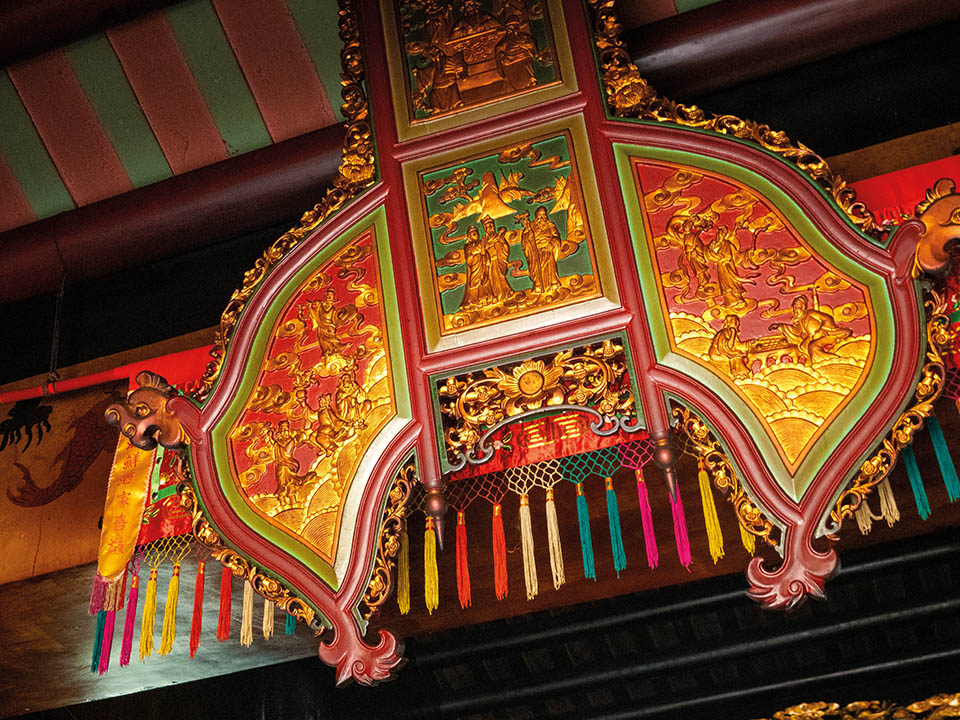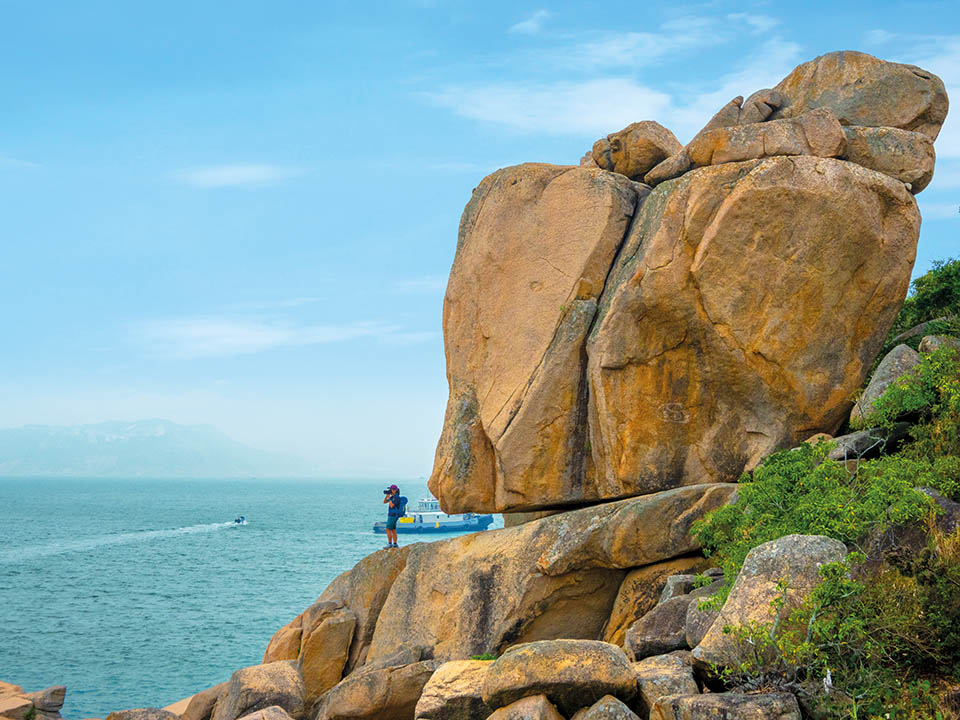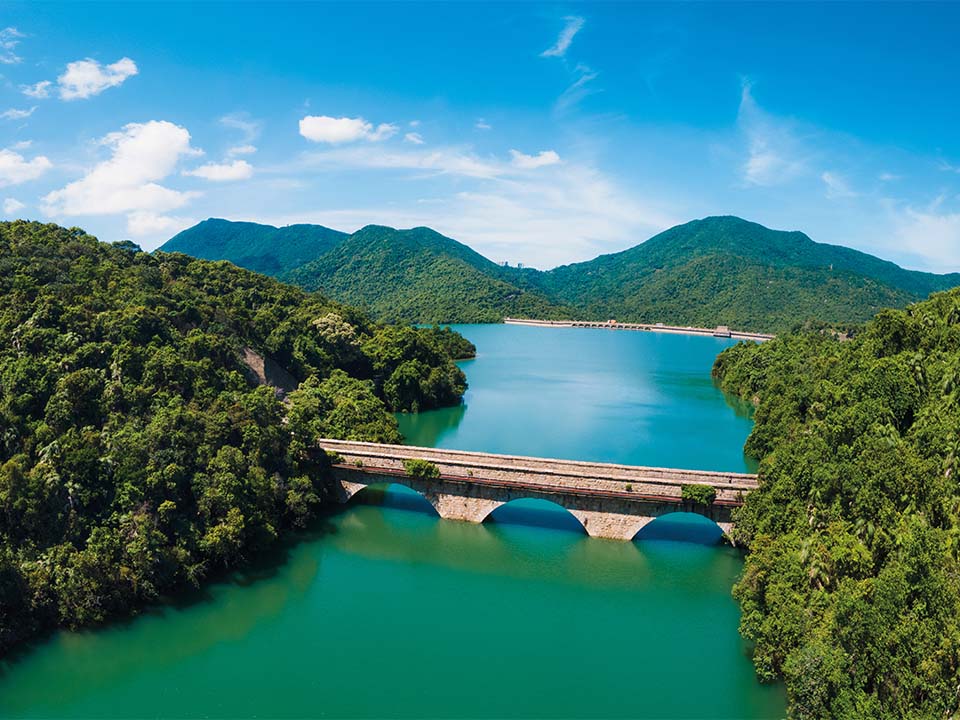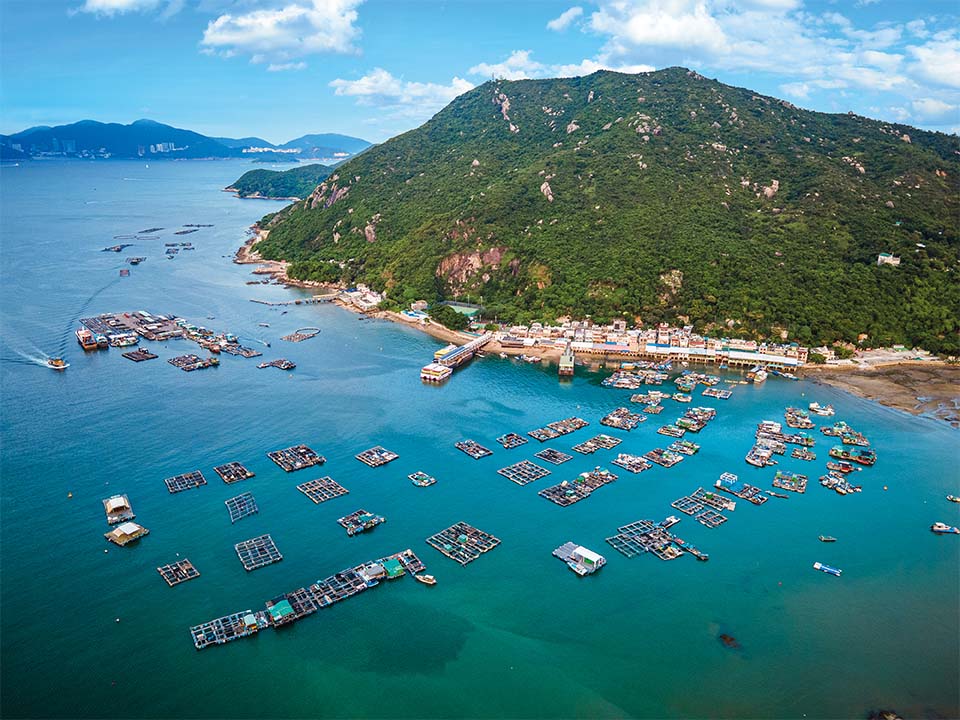About Po Toi Island
Hong Kong’s southernmost island of Po Toi, which is home to few inhabitants, offers a picturesque escape from the bustling city. Get your camera ready to capture images of strange rock formations, ancient carvings and idyllic landscapes. The 3.69-sq-km island, accessible from the city by kaito ferry is known for its craggy, quirkily named coastal outcrops, such as Conch Rock, Palm Cliff and Tortoise Rock. It’s also home to Bronze Age rock carvings dating back more than 3,000 years. You can easily explore the island by following the three crisscrossing hiking trails, which offer amazing coastal views of the South China Sea.
Refuel
There are several village shops next to the ferry pier and in Tai Wan village. You can also buy soft drinks, but availability varies and is not guaranteed, so it’s best to bring your own snacks and drinks.
Few people live on Po Toi, but one of the first families known to have settled there still has a house up on the hill, known as Mo’s Old House (or Old Mansion of Family Mo). This dilapidated, long-abandoned property, built in the 1930s, has interesting stories involving pirates, an attempted kidnapping, occupying Japanese forces and, of course, its original owner Mo Siu-tong, after whom it is named. You can still see reminders of Mo’s descendants inside the house today, such as the tiny concrete flower sculptures set into a few of the walls. But don’t linger inside too long as it’s said to be haunted!
You will find these two thought-provoking outcrops facing Po Toi’s lighthouse. Supine Monk Rock resembles a religious man, with his head raised in contemplation, looking out to sea, while the gigantic Tortoise Rock seems to have stopped for a rest in front of the monk, after climbing the hill. The rock formations offer you the chance to be creative with your photography, which is sure to liven up any Instagram post.
On the south side of Po Toi Island you’ll find Nam Kok Tsui Lighthouse. Some visitors take photos while standing on the steps in front of the blocky concrete building, but walk behind it and stand beside a small monument — inscribed with a Chinese poem in memory of someone who died — which is a good spot for taking photos of the stunning coastal scenery.
Below the path to the left, you can see Palm Rock, also known as Buddha’s Hand Rock, which juts up with outstretched fingers pointing to the sky. This cliffside, hand-shaped outcrop sits next to what appears to be a rock shaped like a person’s head — as if the person is frozen in time while praying or meditating. This is also a great place to relax and glimpse some of the island's wildlife, such as the grey-faced buzzard.
A declared monument in Hong Kong, these two cliff-side rock carvings looking out towards the sea on the southwest edge of Po Toi Island are believed to be more than 3,000 years old. At that time the area that now forms Hong Kong was sparsely populated with many small island villages and fishing havens. The carvings, which were discovered in the 1960s and possibly created to appease sea spirits, feature two different motifs separated by a 70-centimetre-wide rock fracture. One group consists of lines resembling stylised animal and fish patterns, while the other comprises various interlocking spirals. Standing in this remote, craggy location offers you the chance to take in the significance of your peaceful surroundings as the waves crash against the rocks below.
Po Toi is home to only about 20 residents, with most living in Tai Wan village, beside the island’s southern bay. Visit this quaint community to rest and treat yourself to some locally cooked food. You will find several village shops offering a limited menu of mainly local dishes featuring seaweed or fish maw, or sweet soup with beans and kelp. One of the best dishes to try before starting any trek is what the locals call ‘hiker fuel’ — Po Toi’s version of luncheon meat noodles served with home-grown seaweed. You can also buy souvenirs, such as locally produced dried seaweed and dried fish belly.
Tin Hau (Goddess of the Sea) Temple was built on the southwestern edge of the island to protect the local fishermen and villages. The temple organises annual celebrations, including Cantonese opera performances, to mark Tin Hau’s birthday on the 23rd day of the third lunar month, which attract many visitors. Feel free to look around inside the incense-filled temple, while the coastal scenery outside offers Instagram and photography buffs some of the island’s most impressive panoramic views of the South China Sea.
Don’t miss this last hidden gem, Conch Rock, which you can find just beyond Tin Hau Temple. A concrete pathway gives way to smooth sloping rocks and, as you walk on, the top of the huge shell-shaped rock will come into view. The unique-looking shape of the outcrop, precariously positioned beside the sea, has the power to move you.
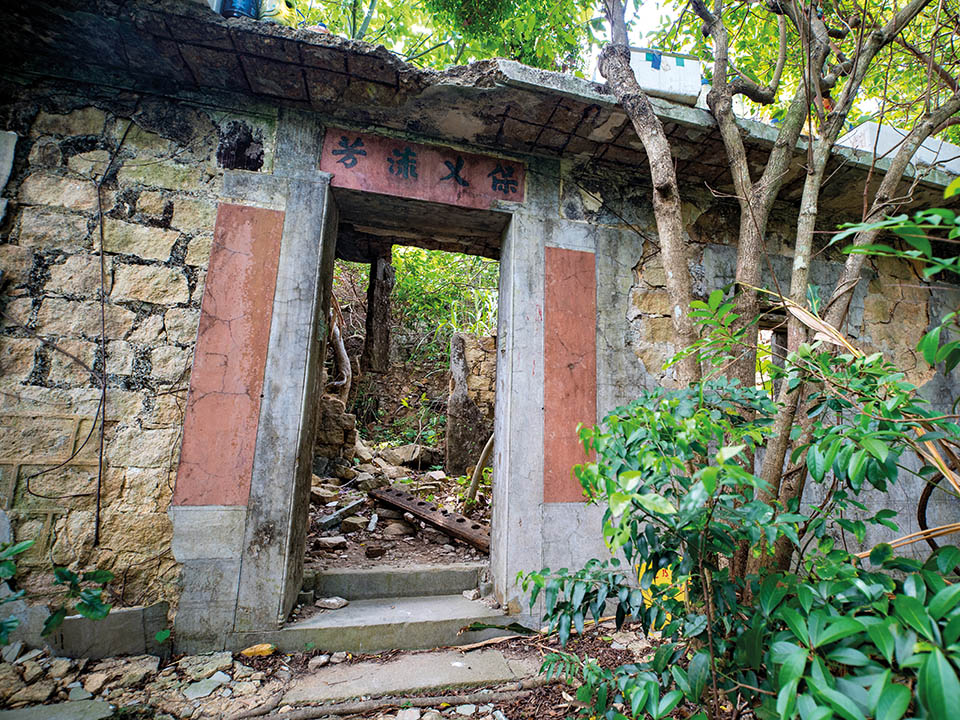
Few people live on Po Toi, but one of the first families known to have settled there still has a house up on the hill, known as Mo’s Old House (or Old Mansion of Family Mo). This dilapidated, long-abandoned property, built in the 1930s, has interesting stories involving pirates, an attempted kidnapping, occupying Japanese forces and, of course, its original owner Mo Siu-tong, after whom it is named. You can still see reminders of Mo’s descendants inside the house today, such as the tiny concrete flower sculptures set into a few of the walls. But don’t linger inside too long as it’s said to be haunted!
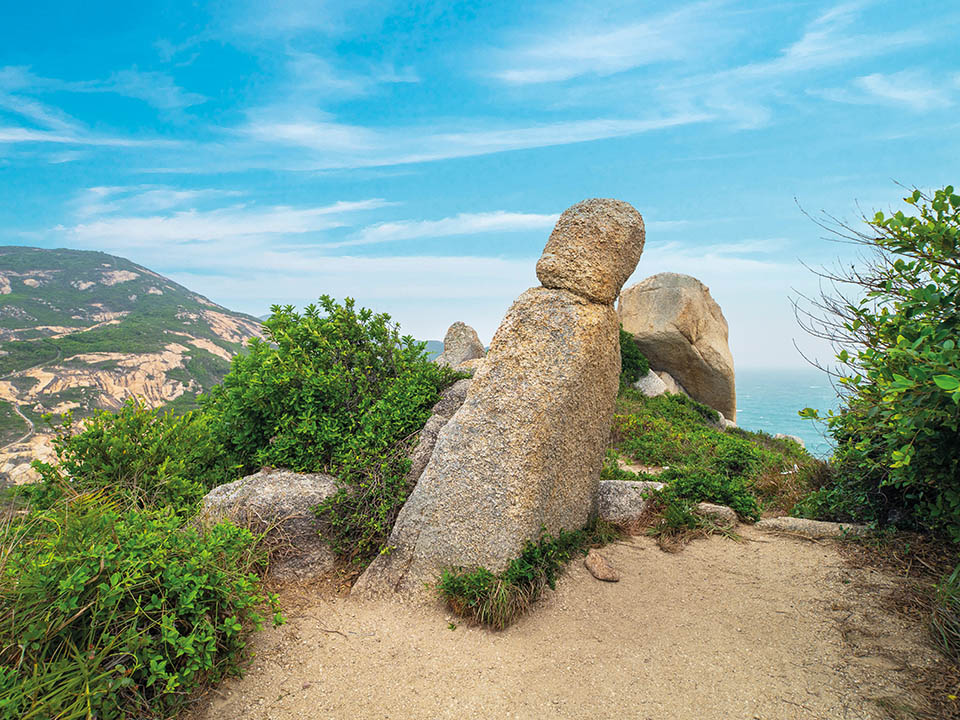
You will find these two thought-provoking outcrops facing Po Toi’s lighthouse. Supine Monk Rock resembles a religious man, with his head raised in contemplation, looking out to sea, while the gigantic Tortoise Rock seems to have stopped for a rest in front of the monk, after climbing the hill. The rock formations offer you the chance to be creative with your photography, which is sure to liven up any Instagram post.
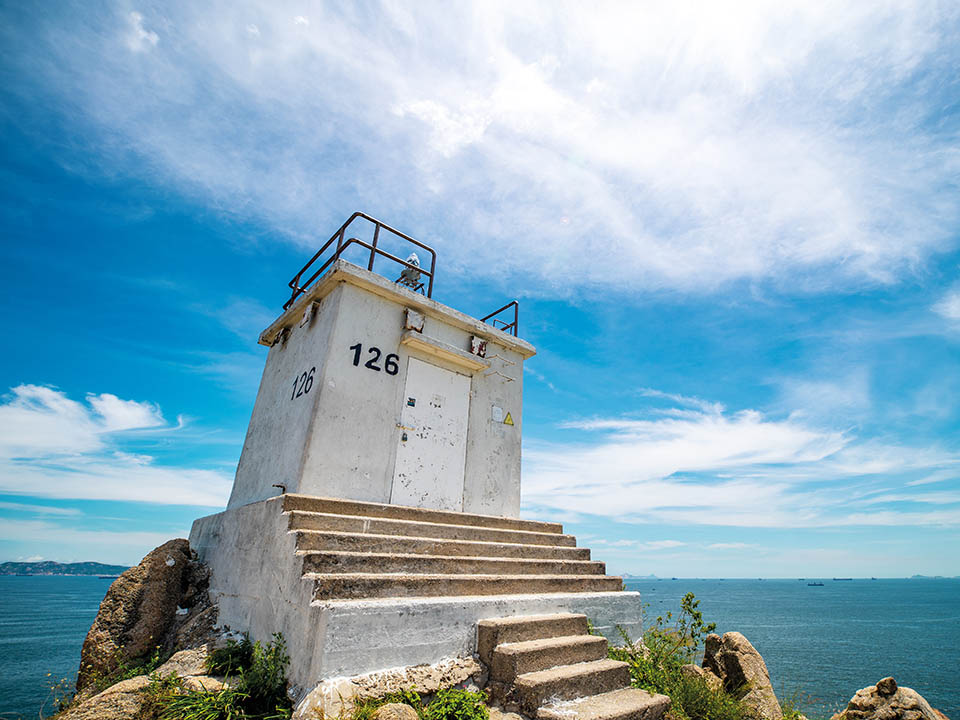
On the south side of Po Toi Island you’ll find Nam Kok Tsui Lighthouse. Some visitors take photos while standing on the steps in front of the blocky concrete building, but walk behind it and stand beside a small monument — inscribed with a Chinese poem in memory of someone who died — which is a good spot for taking photos of the stunning coastal scenery.
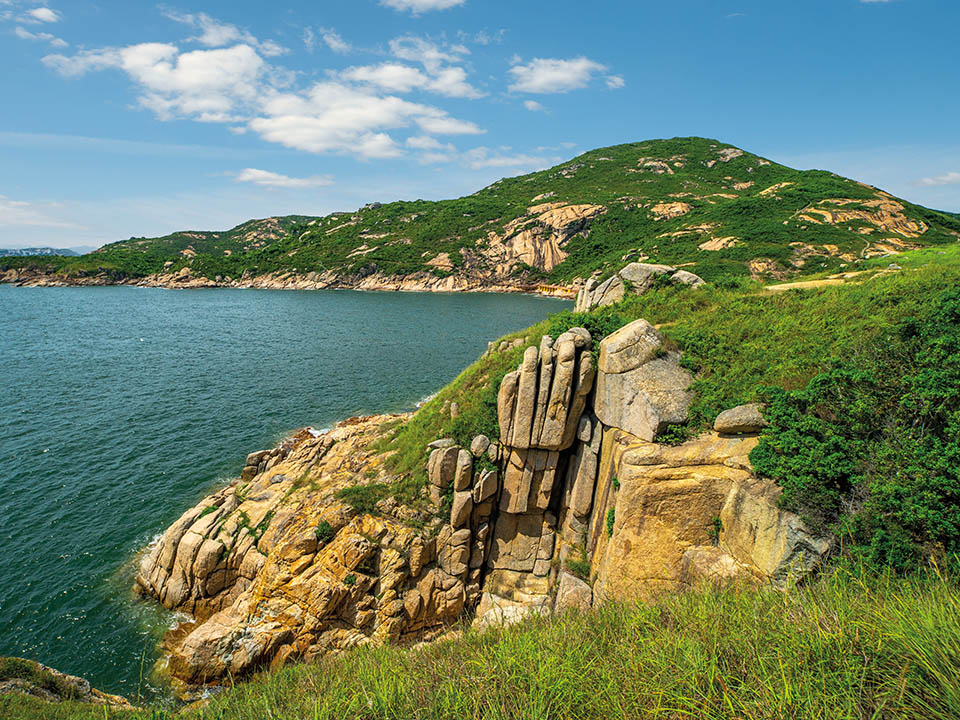
Below the path to the left, you can see Palm Rock, also known as Buddha’s Hand Rock, which juts up with outstretched fingers pointing to the sky. This cliffside, hand-shaped outcrop sits next to what appears to be a rock shaped like a person’s head — as if the person is frozen in time while praying or meditating. This is also a great place to relax and glimpse some of the island's wildlife, such as the grey-faced buzzard.
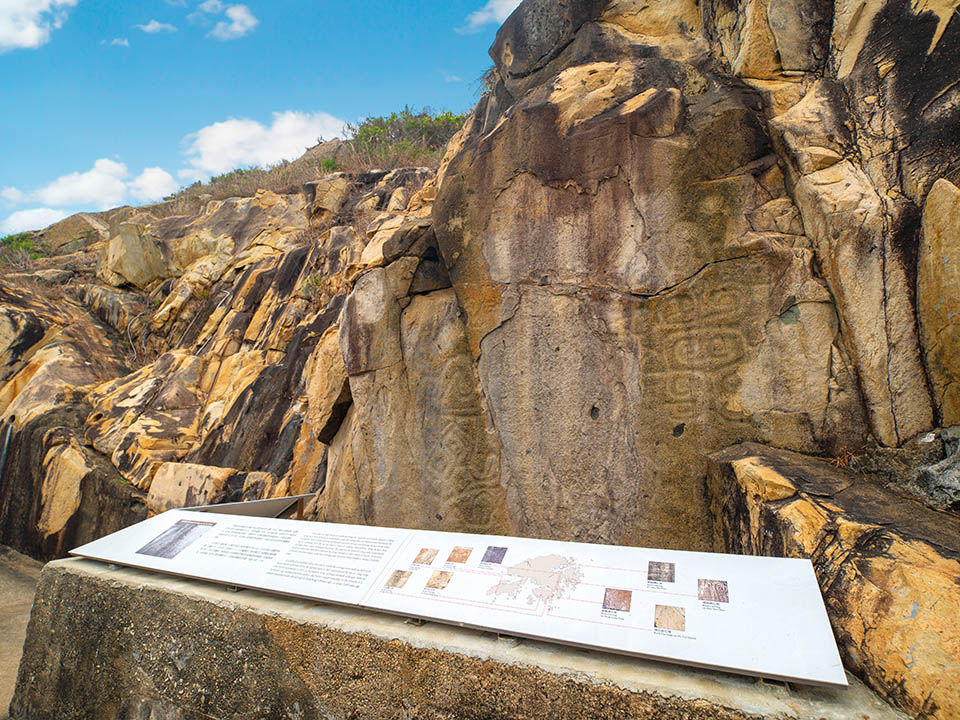
A declared monument in Hong Kong, these two cliff-side rock carvings looking out towards the sea on the southwest edge of Po Toi Island are believed to be more than 3,000 years old. At that time the area that now forms Hong Kong was sparsely populated with many small island villages and fishing havens. The carvings, which were discovered in the 1960s and possibly created to appease sea spirits, feature two different motifs separated by a 70-centimetre-wide rock fracture. One group consists of lines resembling stylised animal and fish patterns, while the other comprises various interlocking spirals. Standing in this remote, craggy location offers you the chance to take in the significance of your peaceful surroundings as the waves crash against the rocks below.
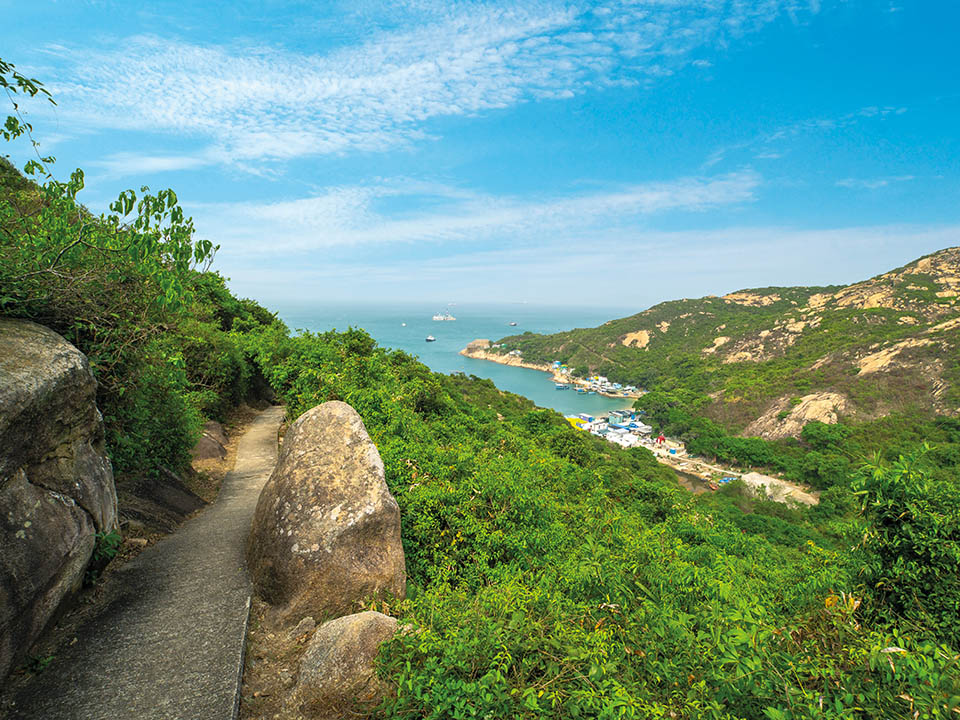
Po Toi is home to only about 20 residents, with most living in Tai Wan village, beside the island’s southern bay. Visit this quaint community to rest and treat yourself to some locally cooked food. You will find several village shops offering a limited menu of mainly local dishes featuring seaweed or fish maw, or sweet soup with beans and kelp. One of the best dishes to try before starting any trek is what the locals call ‘hiker fuel’ — Po Toi’s version of luncheon meat noodles served with home-grown seaweed. You can also buy souvenirs, such as locally produced dried seaweed and dried fish belly.
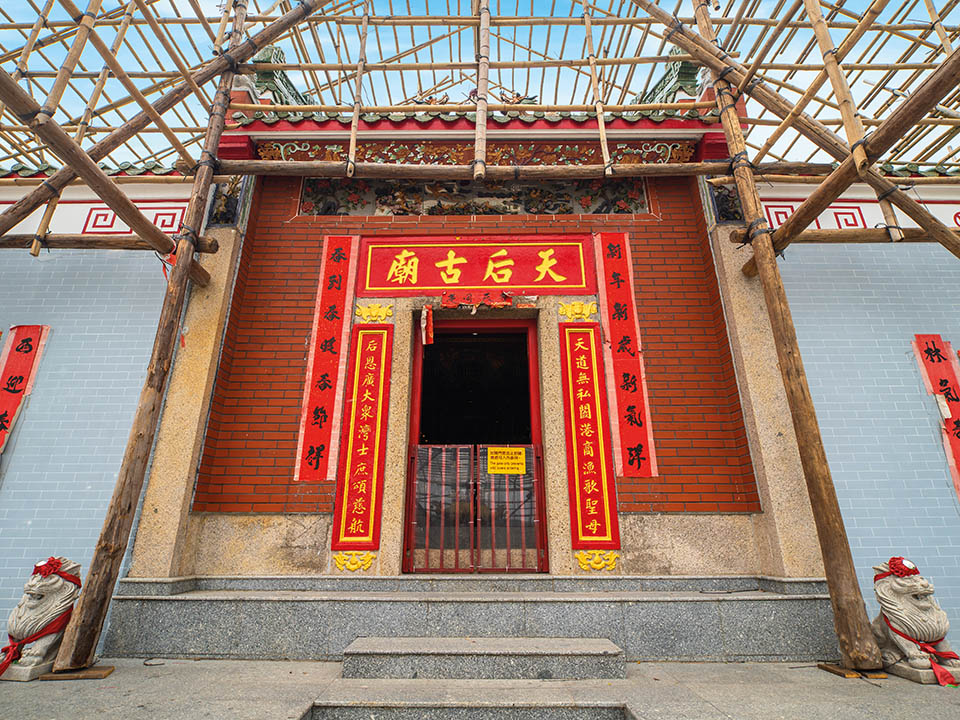
Tin Hau (Goddess of the Sea) Temple was built on the southwestern edge of the island to protect the local fishermen and villages. The temple organises annual celebrations, including Cantonese opera performances, to mark Tin Hau’s birthday on the 23rd day of the third lunar month, which attract many visitors. Feel free to look around inside the incense-filled temple, while the coastal scenery outside offers Instagram and photography buffs some of the island’s most impressive panoramic views of the South China Sea.
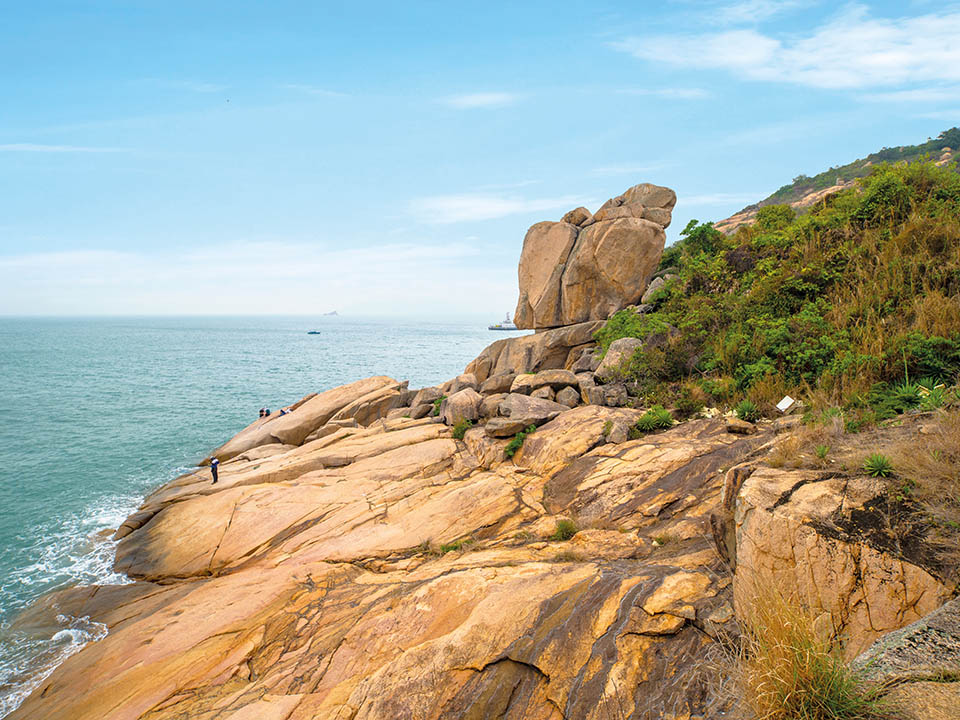
Don’t miss this last hidden gem, Conch Rock, which you can find just beyond Tin Hau Temple. A concrete pathway gives way to smooth sloping rocks and, as you walk on, the top of the huge shell-shaped rock will come into view. The unique-looking shape of the outcrop, precariously positioned beside the sea, has the power to move you.
Transport
Getting to Po Toi Island
Leaving Po Toi Island
From Aberdeen Bus terminus on Wu Nam Street, take the subway under Aberdeen Praya Road and head towards the promenade and pier. You’ll find the Po Toi Ferry Terminal halfway between the Aberdeen Praya public landing steps and the old Jumbo Pier. The kaito to Po Toi Island departs at 10am (once a day). You can also take a 20-minute walk from MTR Wong Chuk Hang Station. The travel time between Aberdeen and Po Toi Island is about 50 minutes.
Weekends and public holidays
You can take a ferry from Aberdeen via Stanley or head straight from Aberdeen/Stanley Pier at weekends and on public holidays.
From Stanley Plaza, head through the shopping mall towards Murray House. The Po Toi Ferry departs from Stanley’s Blake Pier, with a travel time of about 30 minutes.
Check the government website for more details of departures.
The ferry departs at 3:30pm and will signal its departure with a horn 30 minutes, 15 minutes, and 1 minute before it leaves. Arrive at the ferry at least 30 minutes before departure to ensure you get a seat.
Weekends and public holidays
At weekends and on public holidays, several ferries depart from Po Toi for Stanley, but only a few go back to Aberdeen.
Check the government website for more details of departures.
Getting to Po Toi Island
From Aberdeen Bus terminus on Wu Nam Street, take the subway under Aberdeen Praya Road and head towards the promenade and pier. You’ll find the Po Toi Ferry Terminal halfway between the Aberdeen Praya public landing steps and the old Jumbo Pier. The kaito to Po Toi Island departs at 10am (once a day). You can also take a 20-minute walk from MTR Wong Chuk Hang Station. The travel time between Aberdeen and Po Toi Island is about 50 minutes.
Weekends and public holidays
You can take a ferry from Aberdeen via Stanley or head straight from Aberdeen/Stanley Pier at weekends and on public holidays.
From Stanley Plaza, head through the shopping mall towards Murray House. The Po Toi Ferry departs from Stanley’s Blake Pier, with a travel time of about 30 minutes.
Check the government website for more details of departures.
Leaving Po Toi Island
The ferry departs at 3:30pm and will signal its departure with a horn 30 minutes, 15 minutes, and 1 minute before it leaves. Arrive at the ferry at least 30 minutes before departure to ensure you get a seat.
Weekends and public holidays
At weekends and on public holidays, several ferries depart from Po Toi for Stanley, but only a few go back to Aberdeen.
Check the government website for more details of departures.




